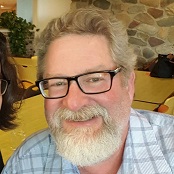|
|
1997 Media Coverage
- Fall, 1997 An article in Impact entitled
"Computer Software Developed at HWI Plays Major Role in Drug Development"
has a nice picture of Drs. Herbert A. Hauptman and Russ Miller. The article
discusses rational drug design, the fundamentals of x-ray crystallography
and the team of Miller, Hauptman, and Dr. Charles M. Weeks, who have created
the Shake-and-Bake program that has been used to solve the "antibiotic
of last resort" vancomycin. The article states that the life-saving
implications of this research cannot be overstated. It also states that
the Shake-and-Bake program has been placed on the Web, where it is free
to academic institutions and non-profit organizations.
- September 18, 1997: An article in
the Reporter
entitled "Miller to lecture on software that can aid fight on deadly bacteria"
states that Dr. Russ Miller
will give a public lecture on the Shake-and-Bake method of structure determination. it also mentions that he has appointments in the Department of Computer
Science and is senior research scientist at the Hauptman-Woodward Medical
Research Institute.
- September 16, 1997: An article in the
Buffalo News
states that a computer program developed at a Buffalo medical research
institute and university may help doctors go one step beyond
the "drug of last resort."
The program has allowed scientists to pinpoint the molecular structure of
an extremely complicated and powerful antibiotic, raising hopes that
even better forms can be designed. Success comes just as the Centers for
Disease Control and Prevention reports the first U.S. cases involving a
strain of bacteria resistant to vancomycin, the only antibiotic effective
against some life-threatening infections.
The team used a computer software program called SnB, or "shake and bake," developed at the University at Buffalo and the Hauptman-Woodward Medical Research Institute (HWI), including Dr. Russ Miller, who is a professor of computer science at SUNY-Buffalo and senior
research scientist at HWI.
Miller stated that "there just aren't any other methods that could have solved this structure."
The Buffalo team's computer software took about a month to deliver a precise mapping of the 400 atoms in vancomycin, a drug isolated from soil microorganisms.
That's far longer than the hours or days SnB usually spends on a complex molecule, but the Pennsylvania team wasn't complaining. Eight months of computer time with other methods already had failed to turn up an answer, and the SnB program does most of its work without any needed human intervention.
Miller said the SnB program, based on an idea Nobel laureate institute president Herbert Hauptman gleaned from an 18th century mathematical principle formulated by mathematician Carl Friedrich Gaus to study asteroid orbits, has been "wildly successful."
The Buffalo team developed the program on massively parallel computers, and has refined it. A second version, faster than the original and using a graphical interface, is about to be released.
- Summer, 1997: An article in FNSM Focus mentions that
Dr. Russ Miller
is co-author (with Q.F. Stout) of the book
Parallel Algorithms for Regular Architectures, published by The
MIT Press. It also states that Dr. Miller was an invited speaker
at the NATO School of Direct Methods for Solving
Macromolecular Structures.
- September 4, 1997: The front page article in the Reporter,
entitled "Software helps unravel structure of drug: fighting drug-resistant
bacteria" states that the SnB software package was used to solve the
structure of vancomycin, the antibiotic of last resort.
Dr. Russ Miller,
a co-developer of the procedure and chief architect of the parallel
implementation of the code,
is quoted as saying that "there just aren't any other methods that could
have solved this structure." The article describes the collaboration with
scientists at the University of Pennsylvania School of Medicine and the
Hauptman-Woodward Medical Research Institute.
- May 8, 1997: An article in the
Reporter
states that Dr. Russ Miller
presented a talk entitled "Molecular Structure Determination" at Penn State
University, Kent State University, and will be presenting a related talk
at the NATO School on Direct Methods for Solving Macromolecular Structures
in Italy later this year. It also states that with is colleague from
the Hauptman-Woodward Medical Research Institute, Dr. Charles M. Weeks, he will be presenting
a workshop/tutorial at the Italy meeting.
- Winter, 1997 An article appears in "Forefronts," a publication
by the Cornell Theory Center, entitled "Crystal Structure Determination."
This lengthy article discusses recent investigations in Buffalo by the
Shake-and-Bake research team. The article describes a recent successful
application of the SnB program to a 600 non-H atom structure. The article
mentions that the program comes with built-in default parameters making
it easy for the researcher to use as something of a black box. It also
mentions that UCLA researchers have used SnB to solve a very important
303 non-H atom structure, which was obtained in several days on a network
of DEC workstations. It also mentions that a group at the University of
Toronto has used the program to determine a previously unknown 460 non-H
atom structure. The article concludes with some recent successes obtained
in Buffalo and a description and figure of the histogram that SnB provides
base on the final minimal function values, which enables researchers to
determine at what point SnB has likely determined a solution.
|
